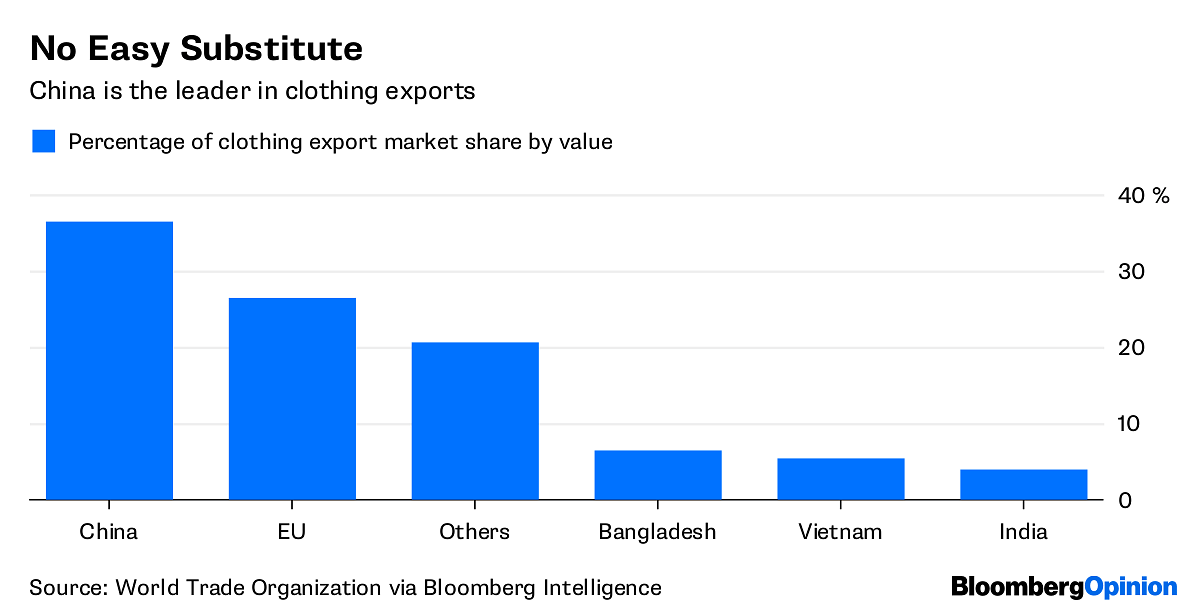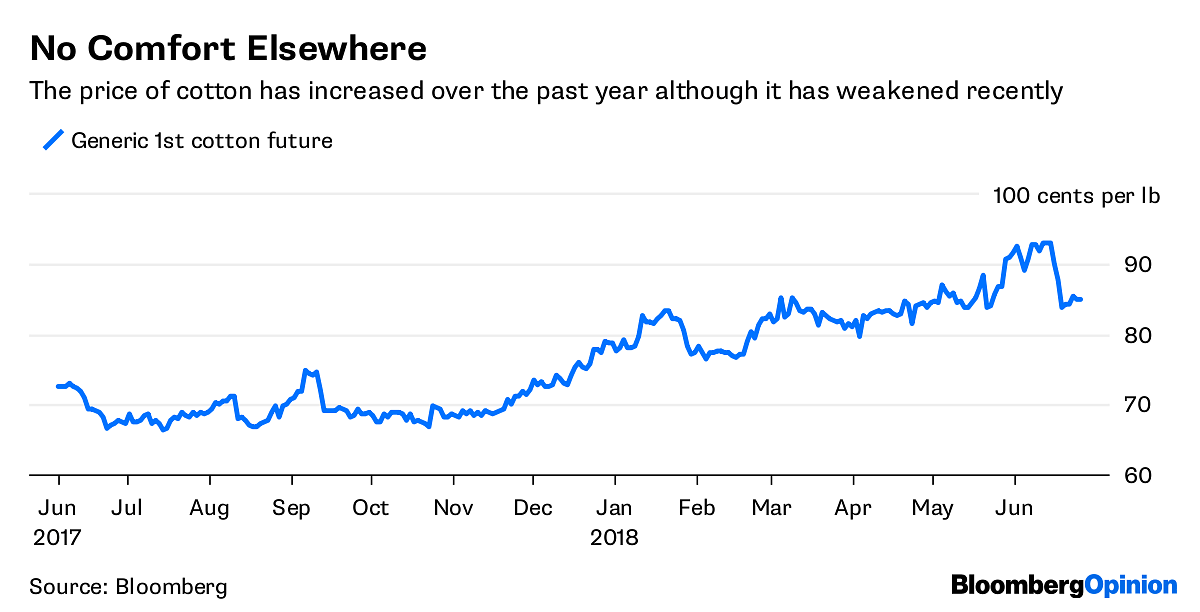US retailers face a dilemma: alleviate tariff impact by shifting sourcing to other countries, or wear the extra cost.
Tariffs wouldn’t be a good look for fashion retailers.
Right now, clothing and footwear aren’t included in the list of Chinese products threatened with punitive duties by the US. But as my colleague, David Fickling has noted, adding another $200 billion would probably mean consumer goods being drawn into the fray.
Clothing accounts for about $35 billion of China’s annual exports to the US, and footwear $15 billion, around 10 per cent of the total, according to Dylan Chu, China consumer discretionary analyst at CLSA Ltd.
Manufacturing outside of China has developed over the last five to 10 years, partly in response to the country’s rising wage costs.
Bangladesh has taken some share, thanks in part to zero-tariff access to Europe for its textiles, as has Vietnam. Other potential sources of supply include Cambodia, Indonesia, the Philippines and India. Africa is also developing its manufacturing base, including in Ethiopia, Kenya and countries in the north of the continent.
But China still accounted for 36.4 per cent of global clothing exports in 2017, according to the World Trade Organization.

It’s possible US retailers that source direct from factories or suppliers that procure on their behalf could shift more manufacturing to centers outside of China. Indeed, many have already been doing so in order to offset higher labor costs.
There’s a limit to how effective that strategy will be. For a start, there might not be enough capacity elsewhere to meet all the extra demand.
There’s another reason why moving manufacturing out of China is such a headache: speed.
The developed infrastructure – fabric and other components are also made in the nation – means garments can be turned around more quickly. Moving further afield means longer lead times. Vietnam probably has the edge here: Supplies can be trucked in from its northern neighbor. Even so, Chu estimates that the lead time for apparel would typically be 45 to 90 days in Vietnam, compared with as little as 10 to 20 days in China.
So US retailers and their suppliers face a dilemma: try to alleviate the impact of tariffs by shifting sourcing to other countries, or wear the extra cost and have the latest looks in stores more quickly.
Speed to market is imperative. Spain’s Inditex SA is the leader here. Its Zara chain is able to get the hottest trends to consumers within weeks. That’s because the company makes about 60 per cent of its products close to its headquarters, in Spain, Portugal and Morocco.

Rivals on both sides of the Atlantic are taking note, and are trying to make their supply chains more efficient.
In theory, consumers should be prepared to pay more for the latest looks. What’s more, having more fashion hits, and fewer misses, should mean less product being sold at a discount. That should mean more of a cushion to absorb higher duties.
But consumers have got used to ever cheaper clothing, and with low-priced European rivals such as Associated British Foods Plc’s Primark forging into the US, that might not necessarily be the case.
Other options include trying to push the extra costs further down the supply chain, forcing manufacturers to share some of the pain. That won’t be easy either. The cost of cotton has risen over the past year, while higher oil prices mean synthetic fabrics are more expensive.
Retailers will be hoping that speed to market does indeed win out, and consumers will prioritize the latest color or style over the bargain basement. Otherwise, a tricky tariff situation will become even more precarious. -Bloomberg



